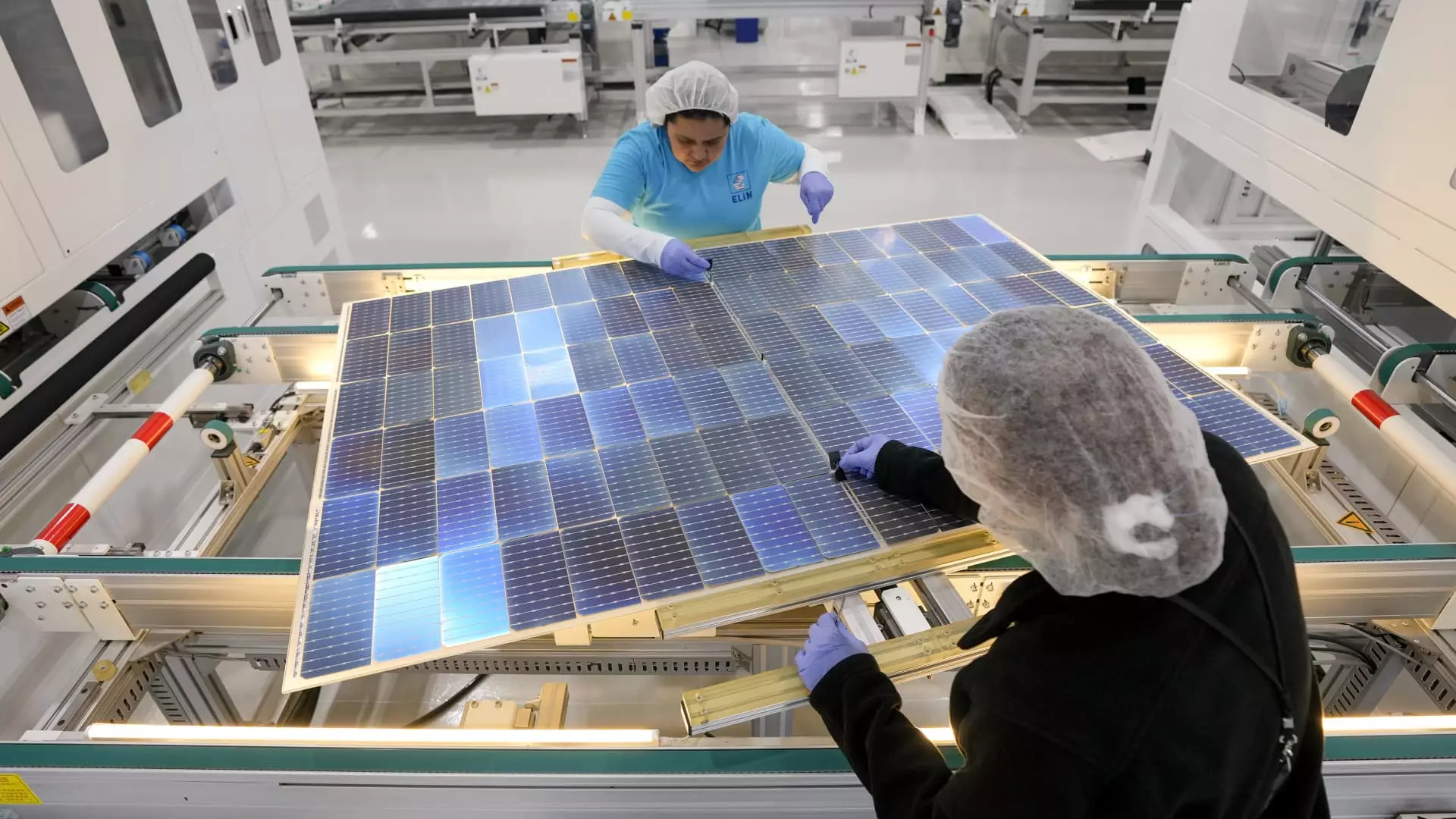The Inflation Reduction Act has ignited a manufacturing boom across the United States, with investments totaling tens of billions of dollars, particularly in rural areas that are in need of economic development. Since President Joe Biden signed the IRA into law in August 2022, companies have announced a staggering $133 billion of investments in clean energy technology and electric vehicle manufacturing, as reported by data from the Massachusetts Institute of Technology and the Rhodium Group. This surge in manufacturing investment represents a 305% increase compared to the two years prior to the IRA, highlighting the significant impact of this legislation on the manufacturing sector.
Despite the promising outlook brought about by the IRA, the future of these investments hangs in the balance with the upcoming U.S. presidential election. The uncertainty surrounding a potential Republican victory has stirred apprehension among investors, who fear that the IRA may be weakened or even repealed. Such concerns have the potential to derail the progress made in the manufacturing sector and jeopardize the transformative effects of the IRA, particularly in clean energy manufacturing facilities.
One of the most significant outcomes of the investments sparked by the IRA has been the positive impact on rural communities. Unlike investments in AI, tech, and finance, which tend to concentrate in urban centers, clean energy investments are substantially benefitting rural areas. These investments are injecting new opportunities and revitalizing economies in regions that have traditionally faced economic challenges.
Another notable consequence of the IRA is the acceleration of renewable energy deployment, with a substantial $108 billion being invested in utility-scale solar and battery storage projects. The data from the Rhodium Group indicates a significant increase in investments in solar and battery storage by 56% and 130%, respectively, over the past two years. This surge in renewable energy investment underscores the pivotal role of the IRA in driving the transition towards sustainable energy sources.
While the IRA has been instrumental in catalyzing a “manufacturing renaissance,” industry experts emphasize that this resurgence is still in its nascent stages and remains vulnerable. The looming specter of the law being dismantled, as advocated by former President Donald Trump, poses a considerable threat to the progress made in the manufacturing and clean energy sectors. Trump’s pledge to prioritize oil, gas, and coal production underscores the potential regression that could occur if the IRA is rolled back.
The market response to political developments, such as President Biden’s debate performance and the prospect of a Republican administration, has been marked by volatility. Clean energy stocks experienced a decline amid concerns of policy shifts that could favor fossil fuel projects over renewable energy initiatives. The hesitance among investors to commit to projects until there is clarity on the future policy landscape reflects the uncertainty that currently looms over the clean energy industry.
The potential ramifications of policy changes, such as the rollback of the IRA and the cessation of tax credits for electric vehicles, have significant implications for the clean energy and manufacturing sectors. The future of investments, production, and manufacturing tax credits hinges on the outcomes of the presidential race and subsequent legislative decisions. The delicate balance of power in the House and Senate, coupled with evolving political dynamics, underscores the complexities surrounding the future of clean energy initiatives.
The Inflation Reduction Act has unleashed a wave of investments and manufacturing growth in the U.S., particularly in the clean energy sector. The pivotal role played by this legislation in revitalizing rural communities, accelerating renewable energy deployment, and driving manufacturing activity underscores its significance. However, the looming political uncertainties and threats of policy reversals present formidable challenges that could potentially impede the progress made under the IRA. As the manufacturing renaissance propelled by the IRA continues to gather momentum, the outcome of the upcoming presidential election will undoubtedly shape the future trajectory of the manufacturing and clean energy landscape in the United States.

